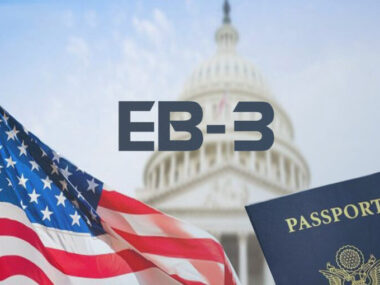What Is a $10,000 Relocation Package?
A $10,000 relocation package is a financial support system provided by employers to cover the costs associated with moving for a new job. This $ amount can include direct payments, reimbursements, or services valued at $10,000 or more, tailored to ease the transition. Common components encompass moving expenses up to $5,000, temporary housing costing $2,000–$3,000, and travel reimbursements around $1,000. Employers offer these packages to attract top talent, with the average US relocation package valued at $21,327 according to industry surveys, though $10,000 is a solid starting point for negotiations in mid-level roles.
Once you relocate, keep and document every expense: receipts, invoices, mileage logs, hotel bills, temporary housing invoices, utility connection quotes. Request a relocation reconciliation period (often 60 or 90 days post-move) where you submit all actual costs and the company pays the difference. This ensures your $10,000 package doesn’t shortchange you if you spent more than estimated. Also ask whether any excess costs (beyond your cap) are considered for additional reimbursement or special approval.
Preparing for the Negotiation
Before negotiating a $10,000 relocation package, research your worth and the company’s policies. Calculate your relocation costs: moving a one-bedroom apartment across states can cost $2,000–$4,000, while international moves may exceed $10,000. Use tools from the U.S. Bureau of Labor Statistics (BLS) to benchmark salaries and benefits in your industry. Document your expenses, such as $1,500 for shipping household goods or $800 for airfare, to justify your $10,000 request. Approach the conversation professionally, timing it after a job offer but before acceptance, emphasizing how the $ support will enable you to start contributing immediately.
Additionally, gather multiple moving quotes, check local housing rates, and estimate hidden costs (utility deposits, renter’s insurance, utility hook-up fees). Presenting a detailed spreadsheet with projected costs strengthens your case. Also research whether the company’s relocation policy includes gross-up (i.e. the employer pays extra so your net after taxes remains intact). That knowledge helps you avoid unpleasant surprises.
Market Norms and Benchmarks
Many large companies standardize relocation packages based on role level. For example, senior roles may receive $10,000–$15,000, while executive roles get $20,000–$30,000 or more. Surveys from relocation firms (e.g., Worldwide ERC) show average U.S. packages currently around $21,000+. Drawing on industry benchmark data helps frame your ask. Use government salary and benefits data from U.S. Department of Labor to compare compensation norms and relocation benefits across sectors. Presenting such benchmarks signals you understand the market and makes your request more professional.
Key Components to Ask For in Your $10,000 Package
When negotiating, break down the $10,000 into specific, reimbursable items to maximize value. Prioritize high-cost needs first:
- Moving Expenses ($3,000–$5,000): Request coverage for professional movers, packing materials, or truck rentals. For example, interstate moves average $4,000, so ask for full reimbursement up to $5,000 to avoid out-of-pocket costs.
- Temporary Housing ($1,500–$3,000): Secure $2,000 for 30 days of furnished lodging while house hunting, as short-term rentals can cost $100–$150/night.
- Travel Reimbursements ($500–$1,000): Cover flights or mileage at $0.67/mile (IRS rate), plus $200–$300 for meals during the move.
- Home Selling/Buying Assistance ($1,000–$2,000): Ask for $1,500 toward real estate fees or closing costs, especially if selling a home valued at $300,000+.
- Spousal Job Search Support ($500–$1,000): Include $750 for career coaching or networking events to aid partner employment.
- Miscellaneous ($500–$1,000): Request $800 for utilities setup, storage fees, or pet relocation, which can add up to $500 quickly.
Aim to exceed $10,000 by 10–20% in your initial ask, allowing room for compromise while ensuring the package meets your $ needs.
International / Cross-Border Moves
When relocating internationally, additional costs arise: shipment of personal effects, visa and immigration fees, customs and duties, international pet transport, and cross-cultural orientation allowances. A $10,000 domestic package might not stretch far for a move across continents. For example, shipping a 20’ container internationally may cost $4,000–$8,000, and visa immigration fees can range $1,000–$5,000 depending on country. Be ready to request extra budget or separate “international relocation bonus” on top of your $10,000 base package.
Tax Implications of Your $10,000 Package
Relocation packages have tax consequences that can reduce your net $ benefit. Under IRS rules, certain reimbursements are taxable income. For instance, a $10,000 package with $4,000 in non-qualified expenses (e.g., temporary housing beyond 30 days) could add $1,000–$2,000 to your tax bill at a 22% bracket. Qualified moving expenses, like $3,000 for household goods transport, remain tax-free if meeting distance and time tests. Consult the IRS guidelines to classify components and request gross-ups—where employers add $1,000–$2,000 to cover taxes, preserving your full $10,000 value. You can find guidance from the Internal Revenue Service (IRS).
Also be aware: under recent tax law changes, some moving expense deductions have been eliminated unless under specific circumstances (e.g. military). Ask your employer and tax advisor whether your move qualifies under current tax code. If not, design the relocation package to shift as much as possible into non-taxable or reimbursable categories (e.g. reimbursements, allowances) rather than lump sum payments.
Gross-Up and Cash vs In-Kind Value
Always understand gross-up and in-kind benefits. A gross-up means the employer increases your relocation payment so that after taxes you still net your full intended amount. If you accept a $10,000 taxable relocation, your net might be only $7,500–$8,500 after withholding. Ask whether your employer will gross-up that portion to preserve your full benefit. Also, clarify in-kind benefits (e.g., movers, housing) vs cash—some are non-taxable if structured properly, others not.
Negotiation Strategies for a $10,000 Package
Effective negotiation can turn a standard $5,000 offer into $10,000+. Start by expressing enthusiasm for the role while highlighting relocation challenges, such as $2,500 in family travel costs. Use data from sources like the U.S. Department of Labor to show industry averages — tech firms often provide $15,000+ packages. Propose alternatives if cash is limited, like $3,000 in services (e.g., moving company vouchers) equaling your $10,000 goal. Be flexible but firm; if they counter with $8,000, ask for $2,000 in additional perks like paid time off for moving.
You can also break down the package into phased payments — part upfront, part after 30 or 60 days of employment. Show a cost-benefit: by helping you land and start more smoothly, the company saves on onboarding disruptions and relocation stress. Keep all requests in writing and signed before relocation begins.
Post-Move Auditing & Reconciliation
Once you relocate, keep and document every expense: receipts, invoices, mileage logs, hotel bills, temporary housing invoices, utility connection quotes. Request a relocation reconciliation period (often 60 or 90 days post-move) where you submit all actual costs and the company pays the difference. This ensures your $10,000 package doesn’t shortchange you if you spent more than estimated. Also ask whether any excess costs (beyond your cap) are considered for additional reimbursement or special approval.


